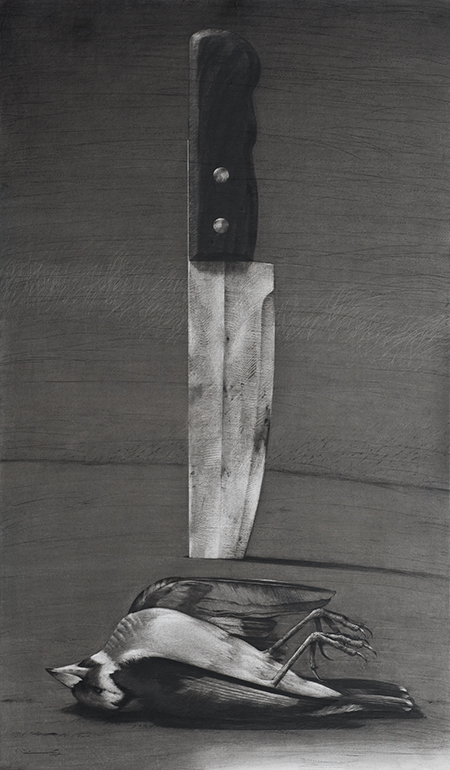What Remains
Can art survive a civil war?
Can art survive a civil war?

In early March, the civil war in Syria entered its fourth year. In addition to claiming over 120,000 lives and causing one of the worst refugee crises in history, the conflict has forced a litany of gruesome phenomena upon the world, from the widespread sexual mutilation of children to jihadist groups so schizophrenic in their violence that even Al-Qaeda has disavowed them.
For years, the news has been so relentless, particularly in the shadow of the war cast over neighbouring Lebanon, that it was easy to miss the date amid the grim daily details: the famed Syrian filmmaker Mohammad Malas taken from a checkpoint and questioned for five hours; the press corps stressed about the ransom paid to free a kidnapped colleague (‘this has safety implications for us all’, said one); a clearly homeless, impossibly small boy wandering through my neighbourhood in the rain; an armless refugee begging for change in mid-day traffic, using the stubs of his shoulders to stuff 1,000 lira notes into his mouth, and the shuddering indifference of drivers all around him.
It’s hard to recall that, only three years ago, Syria was pitching itself as a tourist-friendly hub of ancient culture and contemporary art. Aleppo was poised to become the next Marrakech. Galleries were opening everywhere. Seventy-eight international archaeological teams were at work throughout the country (now, virtually all of the sites have been bombed, looted and destroyed, an unimaginable loss of heritage). The first lady, Asma al-Assad, was a fast-emerging patron of the arts. Early in 2011, she invited the directors of the British Museum, the Louvre and the Hermitage to a forum in Damascus on the future of museums, titled ‘Cultural Landscapes’; it was quietly cancelled when the demonstrations began. And they began, of course, in Deraa, after a group of teenagers clocked the events that were unfolding in Tunis and in Cairo and wrote on their school walls: ‘It’s your turn, doctor’ in reference to Syria’s weak-chinned president, Bashar al-Assad, an ophthalmologist. They were arrested, beaten and detained for weeks. When their parents came and begged for their release, they were told to ‘go home and have more [children]’.
What remains of Syria as a centre of art and culture? Surely no more than rubble. But in the days around the conflict’s anniversary, posters of the work of the great Syrian artist and former dissident Youssef Abdelké began appearing around Beirut. They were simple announcements about the artist’s first solo exhibition in Lebanon for nearly 20 years, and included a harrowing image – a reproduction of a dark charcoal drawing, Mère du martyr (Mother of a Martyr, 2012), of a grief-stricken mother slumped over a chair, hands clasped before a framed photograph, mourning her dead son.
Abdelké’s show at Galerie Tanit offered an alternative vocabulary of the civil war. Across nearly 50 drawings, he moved from memento mori (skulls, flowers, spoiled fruit, a seashell) to symbolism (a heart pierced with a hat pin, a knife, a dead bird), martyrdom (mothers, song lyrics, more drawings of photographs), and barely contained rage (a severed head, a corpse). Abdelké’s exhibition was evidence of the many things that do remain, including his work and politics, a multigenerational community of artists, a habit of resilience, and a history of creative figures who have upheld the notion that artists and thinkers are essential to public life.
Now in his mid-60s, Abdelké is the godfather of an art scene that existed before, after and off the radar of Asma al-Assad’s patronage. A former communist who was, like so many others, arrested and jailed as an impressionable young man, he lived in exile in Paris from the 1980s until 2005. Buoyed by news of the Damascus Spring, he returned to the Syrian capital and restored himself in his studio in the Old City, where he regularly gathered fellow artists and friends. Six years later, when the uprising began – with ideas and no violence – he created Art & Freedom, a Facebook page featuring daily posts of images by Syrian artists, which was named after the group of revolutionary Egyptian surrealists formed by the painter Ramses Younan and the poet Georges Henein in 1939.
Then, last summer, Abdelké was arrested, again, and went missing, again. Some 40 days later, he was released. He was thinner and, for an elegant man, unkempt. He stopped for a shave and a haircut on his way home.
‘My work here is related to the revolution in Syria,’ Adelké said during his show in Beirut, ‘but life is also bigger and wider than the revolution. Even if you are a rebel, you want to talk to your son or your daughter; you want to see beauty. Politics is a part of our lives. Everything is politics.’ In art, he added, ‘politics is the performance more so than the subject. As a draftsman, I am interested in lines and shadows. I work on the smallest details. But the situation in Syria does not leave me indifferent,’ he explained, nodding to the blooms of red paint flung onto some of his more anguished drawings. ‘That was spontaneous, to show the enormous destruction of my country. Being in jail for 40 days was nothing,’ he said. ‘The tragedy of Syria is much bigger than this.’






















